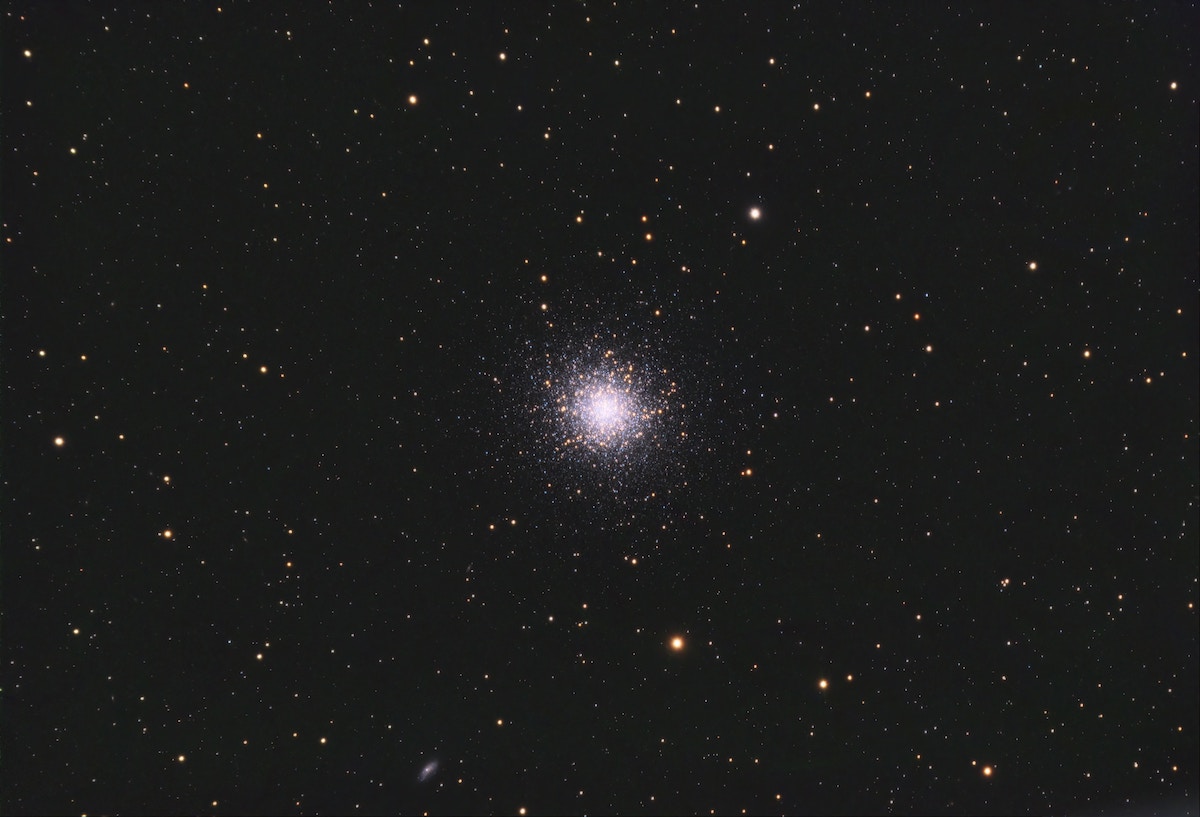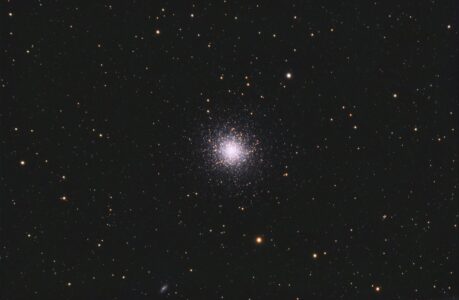Unveil the mysteries of the cosmos by observing various types of star clusters in the night sky. Learn how these celestial gatherings form, differ, and captivate astronomers and stargazers alike.
Introduction: Gazing into the Cosmic Gatherings
The night sky has always mesmerized humanity with its vast expanse and twinkling stars. Among the many celestial wonders that grace our view, star clusters stand out as captivating gatherings of stars. These clusters, each with its unique story, formation, and allure, offer a glimpse into the intricacies of the universe. Whether you’re an amateur astronomer or a casual stargazer, observing these clusters can be a rewarding experience that deepens your understanding of the cosmos.
The Beauty of Diversity: Types of Star Clusters
1. Open Clusters: Stellar Nurseries Illuminated
Open clusters, often referred to as galactic clusters, are gatherings of young stars born from the same molecular cloud. These clusters are characterized by their loose arrangement and relatively small member count, typically ranging from a few dozen to a few hundred stars. The stars within open clusters share a common origin and drift through space together. These clusters provide a rare glimpse into the early stages of stellar evolution, allowing astronomers to study the interactions between young stars. The iconic Pleiades, also known as the Seven Sisters, is a well-known open cluster residing in the Taurus constellation. Its bright stars and distinctive blue reflection nebulae make it a favorite target for both beginners and seasoned observers. Another fascinating example is the Beehive Cluster (M44) in the Cancer constellation, where hundreds of stars are sprinkled like celestial diamonds.
2. Globular Clusters: Ancient Spheres of Stars
Globular clusters present a stark contrast to their open counterparts. These spherical agglomerations are composed of thousands to millions of stars tightly packed together. Formed during the early stages of galaxy evolution, globular clusters are among the oldest objects in the universe. Their stars are ancient, providing a unique window into the early history of galaxies. The Hercules Cluster (M13) in the Hercules constellation is a prime example of a globular cluster. Its concentrated core, comprised of hundreds of thousands of stars, is a breathtaking sight through a telescope. Similarly, the Great Cluster in Hercules (M92) is another jewel of the night sky, showcasing the densely packed stars that have orbited the Milky Way for billions of years.
3. Stellar Associations: Loose Unions of Youthful Stars
Stellar associations are youthful gatherings of stars that share a common origin, emerging from the same giant molecular cloud. These clusters often have hundreds to thousands of members and are relatively loose in structure. Stellar associations play a vital role in the study of star formation and evolution, as the stars within them are at similar stages in their life cycles. The Scorpius-Centaurus Association, one of the nearest and most massive stellar associations to Earth, features hot, young stars that illuminate the surrounding interstellar material. In contrast, the Orion OB1 Association, located in the Orion constellation, showcases an intricate mix of hot, massive stars and cooler, lower-mass stars, offering astronomers a diverse laboratory for studying stellar evolution.
4. Moving Groups: Stars on the Move
Moving groups, also known as kinematic groups, are clusters of stars that share similar velocities and trajectories through space. While not physically bound like traditional star clusters, these groups provide valuable insight into stellar evolution and the dynamics of the Milky Way galaxy. Moving groups often consist of stars that formed together and have since dispersed, creating a dispersed cluster across the cosmos. One example is the Hyades moving group, which includes the Hyades star cluster and a handful of nearby stars. This group is one of the closest and most studied moving groups, shedding light on the ages and motions of its member stars.
The Birth of Clusters: Formation Mechanisms
1. Stellar Nurseries: Birthplaces of Stars
Open and globular clusters find their origins in vast clouds of interstellar gas and dust known as molecular clouds. These stellar nurseries provide the raw material for star formation. Gravity gradually causes regions within these clouds to collapse, forming protostars that mature into full-fledged stars. In open clusters, the stars eventually drift apart due to gravitational interactions and other cosmic forces. In contrast, globular clusters remain gravitationally bound due to their dense cores. The process of star formation in molecular clouds is a delicate dance of gravity and pressure, resulting in the creation of stars that will go on to illuminate the night sky.
2. Triggered Star Formation: Stellar Encounters
Stellar associations often form through triggered star formation. The shockwaves from nearby supernovae or the gravitational influence of massive stars can compress nearby molecular clouds, kickstarting the birth of new stars. This mechanism results in stars that share both an age and a spatial location. These associations offer astronomers insights into the effects of external influences on star formation and the interconnected nature of stellar nurseries.
3. Dynamical Evolution: The Dance of Stars
Moving groups, while not formed in the traditional sense, come into being through the dynamical evolution of stars. Over time, the gravitational interactions between stars within a region can cause them to acquire similar velocities, creating a moving group. This phenomenon offers astronomers insights into the history and dynamics of the Milky Way galaxy. By studying the motions and ages of stars within moving groups, astronomers can piece together the intricate history of our galaxy’s formation and evolution.
Observing Star Clusters: A Stargazer’s Delight
1. Equipment and Preparation: Ready, Set, Observe
To embark on a journey to observe star clusters, gather essential equipment like a telescope or binoculars. Telescopes with moderate to high magnification capabilities are ideal for detailed observations of globular clusters and their intricate structures. For open clusters, a pair of binoculars can provide a broader view of the star-studded landscape. Additionally, bring along any required accessories, such as eyepieces and star charts, to enhance your observing experience.
2. Dark Skies: Escaping Light Pollution
Find a location with minimal light pollution for optimal viewing. Dark skies away from urban areas allow you to experience the full brilliance of these celestial wonders. You can use light pollution maps to locate suitable observing sites near you. By escaping the glow of city lights, you can immerse yourself in the awe-inspiring beauty of star clusters and other celestial objects.
3. Star Charts and Apps: Navigating the Cosmos
Equip yourself with star charts, apps, or planetarium software to identify star clusters and plan your observations. These tools help you pinpoint the exact locations of clusters on specific nights, enhancing your observing experience. With the aid of these resources, you can confidently navigate the night sky and locate the star clusters you wish to observe.
4. Patience and Adaptation: The Art of Observation
Observing star clusters requires patience and adaptability. Allow your eyes to adjust to the darkness and take breaks to avoid eye strain. Experiment with different magnifications and observe over time to grasp the unique features and structures of each cluster. As you observe, take note of the varying colors, brightness levels, and arrangements of stars within the clusters. By honing your observation skills, you can uncover hidden details and truly appreciate the celestial wonders above.
A Celestial Symphony: Connecting with the Universe
As you peer through your telescope or binoculars, the light from these star clusters has traveled vast distances, carrying with it tales of cosmic evolution. Each cluster tells a story of stellar birth, interaction, and journey through time. Observing these clusters not only deepens your knowledge of the universe but also connects you to the celestial symphony that has been playing for billions of years.
Conclusion
The night sky is a canvas painted with the brilliance of countless stars, and star clusters are among the most exquisite brushstrokes on this cosmic masterpiece. From the delicate beauty of open clusters to the ancient grandeur of globular clusters, each type offers a unique glimpse into the marvels of the universe. By understanding their formation mechanisms and honing your observation skills, you can embark on a journey of discovery that bridges the gap between Earth and the stars above. So, on the next clear night, venture outside, gaze upward, and immerse yourself in the captivating world of star clusters.

